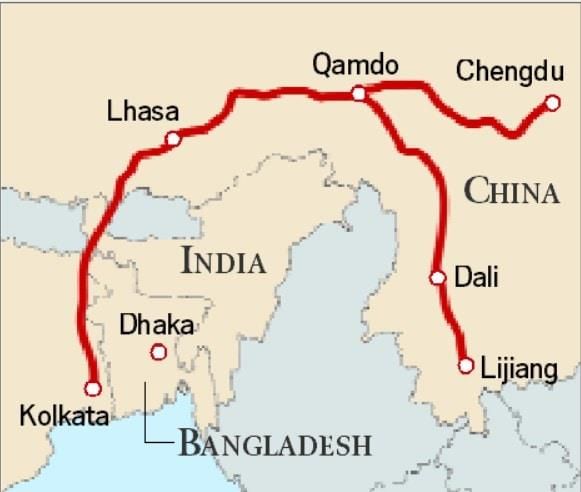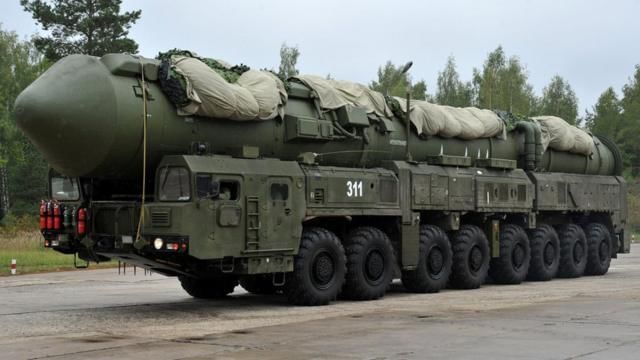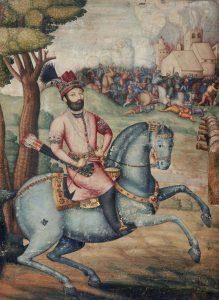UPSC Daily Current Affairs: 25th February 2025 | Current Affairs & Hindu Analysis: Daily, Weekly & Monthly PDF Download
GS3/Economy
Spices Board and Its Regulatory Efforts
 Why in News?
Why in News?
The Spices Board is collaborating with the Food Safety and Standards Authority of India (FSSAI) and other regulatory bodies to implement new regulations aimed at enhancing the spice industry.
- The Spices Board is a statutory body established in 1987 under the Spices Board Act of 1986.
- It resulted from the merger of the Cardamom Board (1968) and the Spices Export Promotion Council (1960).
- The Board operates under the Ministry of Commerce & Industry, focusing on export promotion and development of various spices.
Additional Details
- Statutory Body: The Spices Board functions as an autonomous entity responsible for the promotion and regulation of 52 scheduled spices, including both small and large cardamom.
- International Link: It serves as a crucial link between Indian spice exporters and international importers, facilitating global trade.
- The Board aims to improve quality control and establish international standards to foster sustainable growth in spice exports.
In summary, the Spices Board plays a vital role in regulating the spice industry in India, working towards enhancing quality and boosting export potential through effective collaboration with regulatory agencies.
GS2/Polity
The RTI is Now the ‘Right to Deny Information’
 Why in News?
Why in News?
The Right to Information (RTI) Act was introduced to enhance transparency and empower citizens by granting access to government-held information. Initially seen as a landmark legislation promoting accountability and reducing corruption, the Act now faces significant challenges that diminish its effectiveness.
- The RTI Act was designed to empower citizens and uphold democratic principles.
- Challenges include bureaucratic resistance, judicial restrictions, and legislative amendments.
- Recent court rulings have shifted the interpretation of the RTI Act, leading to reduced transparency.
Additional Details
- Bureaucratic Resistance: Government officials have been reluctant to relinquish control over information, attempting to weaken the RTI Act through amendments, which were met with public opposition.
- Judicial Interpretations: Significant cases, such as the Central Board of Secondary Education vs Aditya Bandopadhyay (2011), introduced restrictive interpretations that hinder the effectiveness of the RTI.
- Impact on Transparency: The reluctance of Information Commissions to enforce penalties, coupled with delays in information provision, has made it easier for authorities to evade scrutiny.
- Consequences: The weakening of the RTI Act has led to increased corruption, reduced government accountability, and hindered investigative journalism.
In conclusion, while the RTI Act was once a powerful tool for transparency and democracy, its effectiveness has been eroded by systemic issues and restrictive judicial interpretations. To safeguard its integrity, active citizen participation and public awareness are essential.
GS3/Environment
Slender-Billed Gull Spotted at Pallikaranai Marshland
 Why in News?
Why in News?
Recently, birdwatchers in Chennai made a remarkable sighting of the slender-billed gull at the Pallikaranai marshland, marking a significant occurrence for the region.
- The slender-billed gull is a medium-sized seabird, scientifically classified as Chroicocephalus genei.
- This species breeds sporadically around the Mediterranean and the northern part of the western Indian Ocean.
- In India, it is commonly observed along the western coast and in northern wetlands.
Additional Details
- Physical Characteristics: The slender-billed gull measures between 37 to 40 cm in length with a wingspan ranging from 90 to 102 cm. It features a pale grey body, a white head and breast, and black-tipped primary feathers.
- Feeding Habits: Approximately half of its diet consists of fish. The gull typically flies a few meters above the water surface and dives to catch suitable prey.
- Conservation Status: According to the IUCN Red List, the slender-billed gull is classified as Least Concern.
The Pallikaranai marshland is a vital freshwater and partly saline wetland located about 20 kilometers south of Chennai, Tamil Nadu. It acts as a natural buffer against flooding in the surrounding areas and is recognized as one of the Ramsar sites in India.
GS1/History & Culture
Significance of Tea Horse Road Connecting India – China
 Why in News?
Why in News?
China’s Ambassador to India, Xu Feihong, recently highlighted the historic Tea Horse Road on social media, emphasizing its significance as a trade route that spanned over 2,000 km and connected China to India via Tibet.
- The Tea Horse Road was an essential trade network linking China, Tibet, and India.
- It played a crucial role in the exchange of tea, horses, and other goods for centuries.
- The route has historical importance in fostering India-China relations.
Additional Details
- Origins of the Tea Horse Road: The route originated during the Tang Dynasty (618-907 CE), facilitating early trade between Southwest China, Tibet, and India. Notable monk Yijing documented the exchange of goods like sugar and textiles from China and Tibetan horses in return.
- Trade Dynamics: By the 10th century, the Song Dynasty established markets along the route to regulate the trade of tea and horses, which became key commodities.
- Challenges: The Tea Horse Road was a network of trails that traversed difficult terrains, reaching elevations of up to 10,000 feet in the Himalayas, making trade perilous yet vital.
- Tea and Horses: Tea was essential for Tibetan nomads, while horses were crucial for China's military needs, particularly in conflicts against Mongolian tribes.
- Modern Relevance: The road's importance was revived during the early 20th century and played a strategic role during World War II as a supply route.
- Decline and Cultural Revival: Post-1949, the route's significance waned but has seen a revival in recent years as a cultural landmark, particularly in Lijiang, which draws tourists interested in its rich historical legacy.
In conclusion, the Tea Horse Road was more than just a trade path; it was a vital connection between China, Tibet, and India, facilitating not only commerce but also cultural exchanges. Despite its diminished role in modern trade, ongoing efforts to preserve its historical significance through tourism highlight its enduring legacy and the deep-rooted ties between India and China.
GS3/Economy
Strategy on Fertilizers
Why in News?
India is focusing on capping or reducing its consumption of fertilizers such as urea, di-ammonium phosphate (DAP), and muriate of potash (MOP) due to the significant reliance on imports for these essential agricultural inputs.
- India's heavy dependence on imported fertilizers, particularly MOP and DAP.
- The impact of currency depreciation on fertilizer costs.
- The need for a balanced fertilization strategy to improve soil health and crop productivity.
- Ammonium Phosphate Sulphate (APS) as a sustainable alternative to DAP.
Additional Details
- Dependence on Imported Fertilizers: India imports over 85% of its DAP and MOP, while urea production is reliant on imported liquefied natural gas (LNG) from countries such as Qatar, the US, UAE, and Angola.
- High Import Dependence and Currency Depreciation: The depreciation of the Indian rupee raises the costs of imported fertilizers, which adds pressure on the country’s foreign exchange reserves.
- Imbalance in Nutrient Application: Urea, MOP, and DAP are high-analysis fertilizers that lead to nutrient wastage as most crops do not require such concentrated nutrient levels.
- Need for Balanced Fertilization: A balanced approach requires a mix of macronutrients (Nitrogen, Phosphorus, Potassium), secondary nutrients (sulphur, calcium, magnesium), and micronutrients (zinc, iron, copper, boron, manganese, molybdenum) to maintain soil health.
- Ammonium Phosphate Sulphate (APS): This fertilizer contains 20% nitrogen (N), 20% phosphorus (P), and 13% sulphur (S), making it an effective alternative to DAP despite its lower phosphorus content.
- Target Crops for APS: APS is particularly beneficial for oilseeds, pulses, maize, cotton, onion, and chilli, which require high sulphur content, while DAP should be reserved for crops like wheat, rice, and sugarcane.
- Surge in NPKS Complex Fertiliser Sales: Sales of NPKS fertilizers are projected to nearly double by 2024-25, driven by the increased popularity of APS, which is steadily replacing DAP.
- Marketing Complex Fertilizers: Other complex fertilizers also require enhanced marketing efforts to promote their use and reduce direct MOP application.
In conclusion, the strategy aims to reduce the reliance on high-analysis fertilizers, promoting balanced fertilization techniques among farmers. This approach not only enhances crop productivity but also conserves foreign exchange, ensuring sustainable agricultural practices moving forward.
GS3/Science and Technology
Spinal Muscular Atrophy: Recent Advances in Treatment
Why in News?
Recently, clinical neuroscientists achieved a significant milestone by successfully treating spinal muscular atrophy (SMA), a severe motor neuron disease, in a baby while still in the womb. This breakthrough highlights advancements in genetic therapies aimed at combating debilitating conditions.
- Spinal Muscular Atrophy is a genetic disorder that primarily affects motor neurons.
- There are five subtypes of SMA, classified by age of onset, severity, and life expectancy.
- Current treatments focus on managing symptoms rather than providing a cure.
Additional Details
- About Spinal Muscular Atrophy: SMA is a debilitating genetic condition that leads to progressive muscle weakness by affecting motor neurons responsible for movement control.
- Types of SMA: The five subtypes are Type 0, 1, 2, 3, and 4, categorized based on the age of onset and severity of the disease.
- Symptoms: Symptoms can vary from mild to severe, primarily causing muscle weakness that impacts voluntary movements, while involuntary muscles remain unaffected.
- Causes: The condition arises from mutations in the survival motor neuron gene (SMN1), leading to a deficiency in a protein essential for motor neuron survival.
- Prevalence: SMA occurs in approximately one in every 10,000 births, making it a leading genetic cause of mortality among infants and children.
- Treatment: Although there is currently no cure for SMA, treatment strategies focus on managing symptoms, which may include physical therapy to improve posture, prevent joint immobility, and slow muscle weakness.
In conclusion, while no definitive cure exists for SMA at present, ongoing research and treatment advancements, particularly in prenatal interventions, hold promise for improving outcomes for affected individuals.
GS3/Economy
What Ails India’s Textile Industry
 Why in News?
Why in News?
India's textile industry is one of the largest in the world, encompassing the entire value chain from cotton cultivation to apparel manufacturing. Despite its vast potential, it faces challenges that hinder its competitiveness in the global market, particularly when compared to countries like China, Vietnam, and Bangladesh. Key issues include fragmented supply chains, elevated costs, and complex regulatory frameworks.
- India is the second-largest producer of cotton globally, contributing to 24% of worldwide production.
- The country also ranks second in the production of man-made fibres (MMF), yet domestic consumption remains low.
- Approximately 80% of the textile value chain operates within MSME clusters, which specialize in various textile products.
- India's textile and apparel sector plays a vital role in the economy, contributing significantly to industrial production and exports.
Additional Details
- Cotton Production: India employs around 60 lakh farmers primarily in states such as Gujarat, Maharashtra, and Telangana. The cotton textile value chain supports over 4.5 crore jobs.
- Man-Made Fibre (MMF) Industry: Despite being the second-largest producer of MMF, per capita consumption in India is only 3.1 kg, significantly lower than China (12 kg) and North America (22.5 kg).
- Export Trends: In FY24, textile exports reached $34.1 billion, with nearly half directed to the U.S. and EU markets. However, garment exports have seen a decline.
The Indian textile industry faces numerous challenges that have stunted its growth, particularly in the face of rising global competition. Addressing these issues is essential for revitalizing the sector and enhancing its export capabilities.
GS3/Defence & Security
Deployment of RS-24 Yars ICBMs by Russia
 Why in News?
Why in News?
Recently, Russia has deployed autonomous launchers of the RS-24 Yars intercontinental ballistic missiles (ICBMs) on combat patrol routes. These launchers are equipped with nuclear warheads, raising concerns regarding global security dynamics.
- The RS-24 Yars is an advanced Russian ICBM system believed to have entered service in February 2010.
- This missile system can be launched from both silos and mobile platforms, enhancing its operational flexibility.
Additional Details
- Features:The RS-24 Yars missile is a three-stage, solid-fueled system with the following specifications:
- Length: 22.5 meters
- Diameter: 2 meters
- Total launch weight: 49,000 kg
- Range: Minimum of 2,000 km; Maximum of 10,500 km
- Guidance System: It utilizes an upgraded guidance system combining inertial navigation with Glonass satellite technology.
- Warhead Capacity: The Yars can carry up to 10 Multiple Independently Targetable Reentry Vehicles (MIRVs), with each warhead capable of yielding 300 kilotons.
- Countermeasures: The missile is designed to maneuver during flight and can deploy both active and passive decoys, providing it with significant advantages against modern missile defense systems.
The deployment of the RS-24 Yars ICBMs underscores Russia's commitment to enhancing its strategic deterrent capabilities, contributing to the ongoing arms race and geopolitical tensions.
GS1/History & Culture
Battle of Karnal (1739)
 Why in News?
Why in News?
On February 24, 1739, the Battle of Karnal became a significant event in the history of the Mughal Empire, leading to its eventual decline.
- The battle resulted in a decisive victory for Nadir Shah's Persian army over Mughal Emperor Muhammad Shah ‘Rangila’.
- The Mughal army, despite having 300,000 soldiers, was defeated within three hours by Nadir Shah's 55,000 well-trained troops.
- After the battle, Delhi was sacked, resulting in the massacre of 30,000 civilians and the looting of the Mughal treasury, which included the famous Koh-i-Noor diamond and the Peacock Throne.
Additional Details
- Impact on Mughal Decline:
- Economic Collapse: The Mughal treasury was depleted, severely harming military and administrative capabilities.
- Weakening Central Power: Governors of Bengal, Awadh, and Hyderabad declared independence.
- Military Decline: The outdated tactics of the Mughal army were exposed, leading to subsequent invasions by figures such as Ahmad Shah Abdali (1748-1761).
- Rise of Regional Powers: The Marathas expanded their influence and ultimately captured Delhi in 1771, while the Sikhs grew stronger in Punjab.
- British Expansion: The East India Company capitalized on the declining Mughal power, paving the way for British rule after 1857.
- Previous Year Question (PYQ):
In 2019, a question was posed regarding the differences between Jagirdars and Zamindars in Mughal India:
- Jagirdars held land assignments in exchange for judicial and police duties, while Zamindars were entitled to revenue collection without any other obligations.
- Land assignments for Jagirdars were hereditary, whereas revenue rights for Zamindars were not necessarily hereditary.
The Battle of Karnal thus not only marked a military defeat for the Mughals but also set in motion a series of events that contributed significantly to the decline of the Mughal Empire and the rise of regional powers in India.
GS2/Governance
Reducing Employer Compliance Burden - A Roadmap for State Governments
Why in News?
State governments impose a significant compliance burden on employers, which accounts for 80% of criminal provisions, 65% of filings, and 63% of total compliances. Chief Ministers (CMs) have the ability to enhance the business environment through three key reforms: Decriminalisation, Digitisation, and Rationalisation. These reforms aim to boost high-wage employment and drive economic growth.
- Employers face a heavy compliance burden, primarily due to state regulations.
- Three major reforms are essential: Decriminalisation, Digitisation, and Rationalisation.
- States like Madhya Pradesh and Tamil Nadu are initiating reforms, while others are contemplating changes.
Additional Details
- Decriminalisation of Employer Compliance: Currently, India has 26,134 employer-related jail provisions, with 80% removable by state governments. The Jan Vishwas Bill eliminated only 110 out of 5,239 central provisions due to bureaucratic inertia.
- Digitisation for Simplified Compliance: 65% of India's 69,233 employer compliances can be transitioned to a digital format, allowing for paperless, presence-less, and cashless operations.
- State Employer Compliance Grids (SECGs): Proposed implementation of SECGs to create a digital infrastructure for compliance, which can be operational within 180 days, integrating with national initiatives.
- Rationalisation of Governance and Compliance Frameworks: The rigid bureaucratic structures in states need simplification by consolidating departments and decentralising policy-making. This aligns with the notion that local governance can be more effective than centralised control.
In conclusion, India's economic challenge revolves around "employed poverty," characterized by a large workforce engaged in low-productivity jobs. CMs can facilitate significant reforms by eliminating unnecessary compliance burdens, enabling businesses to thrive and create higher-paying jobs. As noted by economist Daniel Kahneman, progress can sometimes be achieved by removing obstacles rather than pushing harder.
GS2/Governance
Fencing Out Interfaith Relationships in the New India
Why in News?
On January 27, 2025, Uttarakhand became the first Indian state to implement the Uniform Civil Code (UCC). While proponents claim that it aims to promote gender justice, uniformity, and administrative efficiency, its broader implications suggest a legal framework that places personal relationships under state surveillance. This development necessitates an exploration of how the UCC, in conjunction with anti-conversion laws, threatens personal freedoms, reinforces patriarchal control, and fosters segregation in contemporary India.
- Interfaith marriages face significant social and legal obstacles in India.
- Existing laws and anti-conversion measures exacerbate challenges for interfaith couples.
- The UCC extends state oversight to informal relationships, including live-in arrangements.
- The implementation of UCC sets a dangerous precedent for other states.
Additional Details
- Interfaith Relationships: Interfaith marriages in India encounter immense challenges, with a 2014 survey indicating fewer than 10% of urban Indians had a family member who married outside their caste, and only 5% reported interfaith marriages within their families.
- Legal Barriers: Laws such as the Special Marriage Act, 1954, necessitate a 30-day public notice, increasing vulnerability to scrutiny and harassment.
- Impact of Anti-Conversion Laws: These laws create bureaucratic hurdles, empowering vigilante groups and undermining individual rights, as seen in Uttar Pradesh where complaints often originate from third-party groups.
- State Surveillance: The UCC mandates registration of live-in relationships, subjecting couples to intrusive procedures and potential criminal penalties, disproportionately affecting interfaith couples.
- Empowering Religious Institutions: The UCC formalizes the authority of religious leaders over personal relationships, contradicting India's secular principles.
- Familial Control: Informing families of live-in relationships heightens risks for women, reinforcing patriarchal control and limiting agency.
- Legitimizing Vigilantism: Legal frameworks enable extremist groups to monitor interfaith relationships, increasing communal tensions rather than protecting individual rights.
- UCC Model Expansion: Uttarakhand's implementation may inspire similar laws in other states, threatening India's pluralistic traditions.
The implementation of the UCC in Uttarakhand, alongside existing anti-conversion laws, signifies an unprecedented level of state interference in personal relationships. By bureaucratizing interfaith unions, bolstering religious authority, restricting women’s freedoms, and legitimizing vigilantism, these laws erode individual rights and deepen communal divides. If such policies proliferate in other states, India risks institutionalizing social segregation and undermining the core principles of democracy and personal liberty.
|
63 videos|5397 docs|1142 tests
|
FAQs on UPSC Daily Current Affairs: 25th February 2025 - Current Affairs & Hindu Analysis: Daily, Weekly & Monthly
| 1. What is the role of the Spices Board in India? |  |
| 2. How has the RTI (Right to Information) evolved in India? |  |
| 3. Why is the Slender-Billed Gull significant in the context of Indian biodiversity? |  |
| 4. What is the historical significance of the Tea Horse Road? |  |
| 5. What are the recent advancements in the treatment of Spinal Muscular Atrophy (SMA)? |  |
















